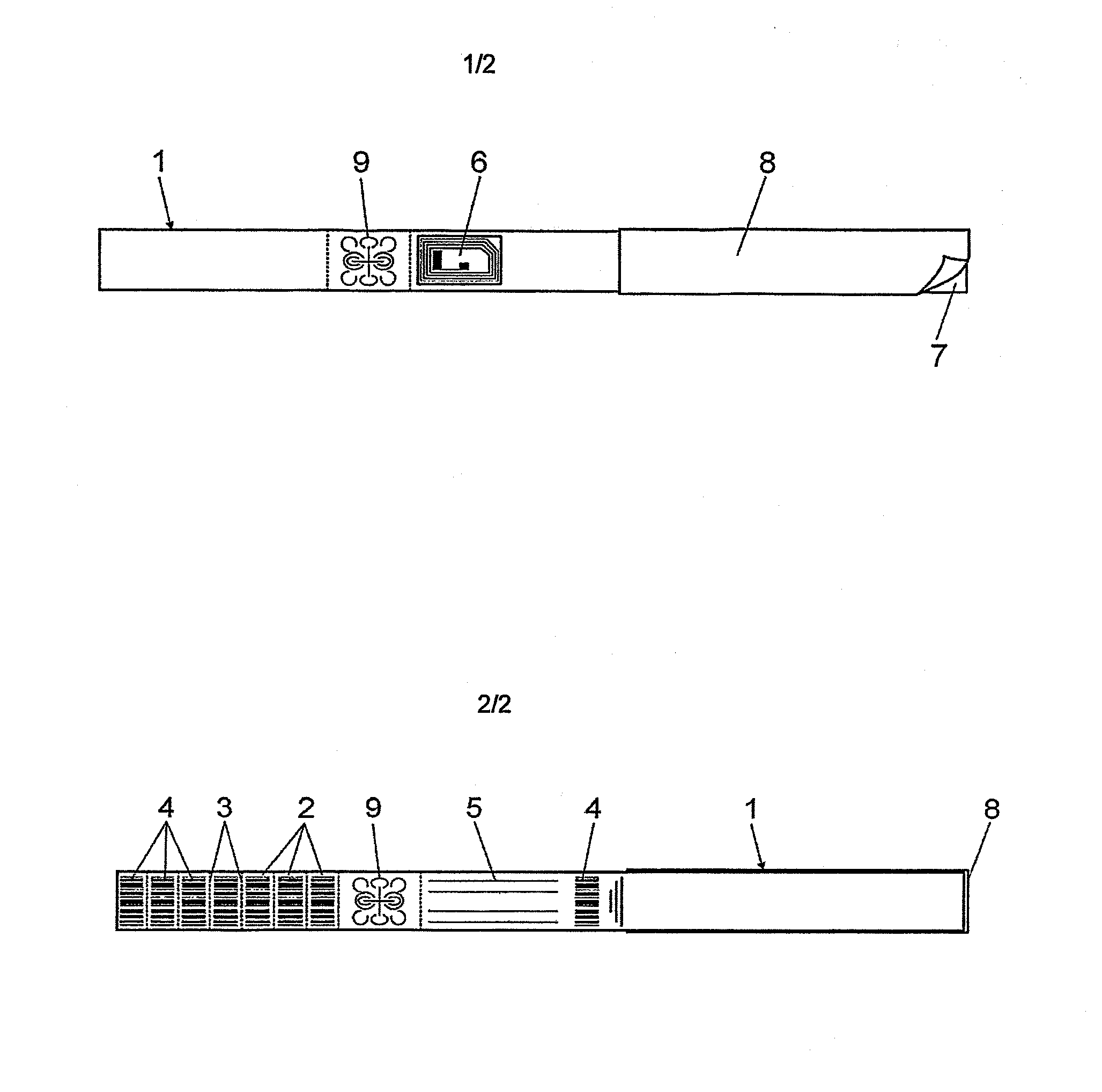Hospital Identification Bracelet
a technology for identification bracelets and hospitals, applied in the field of hospitals and health centers, can solve the problems of patient safety, subsequent risk to patients, hemocomponents or drug reception, and delicate control of such processes, and achieve the effects of convenient automatic identification reading, convenient use, and convenient us
- Summary
- Abstract
- Description
- Claims
- Application Information
AI Technical Summary
Benefits of technology
Problems solved by technology
Method used
Image
Examples
Embodiment Construction
[0018]As can be seen in the referenced figures, the bracelet comprises a thin, strong flexible strip (1) with several self-adhesive labels (2) separated by lines of perforation (3), with printed or printable bar codes (4) on the self-adhesive labels (2), a writable area (5) for patient data and the bar code (4) on the self-adhesive labels (2) and an RFID transponder (6).
[0019]The bracelet comprises a simple closing mechanism, configured, in this case by a self-adhesive area (7) that is covered by a disposable protective sheet (8) that is removed when used and, in an intermediate area of the flexible strip (1), die cuts (9) to reveal improper manipulation of the bracelet by tearing when the self-adhesive (7) area is stuck over said die-cuts (9) by bending the flexible strip (1) into a “U” shape.
[0020]Once the nature of the invention is sufficiently described, together with an exemplary embodiment, it is placed on the record for whatever purpose that the materials, shape, size and arr...
PUM
 Login to View More
Login to View More Abstract
Description
Claims
Application Information
 Login to View More
Login to View More - R&D
- Intellectual Property
- Life Sciences
- Materials
- Tech Scout
- Unparalleled Data Quality
- Higher Quality Content
- 60% Fewer Hallucinations
Browse by: Latest US Patents, China's latest patents, Technical Efficacy Thesaurus, Application Domain, Technology Topic, Popular Technical Reports.
© 2025 PatSnap. All rights reserved.Legal|Privacy policy|Modern Slavery Act Transparency Statement|Sitemap|About US| Contact US: help@patsnap.com


